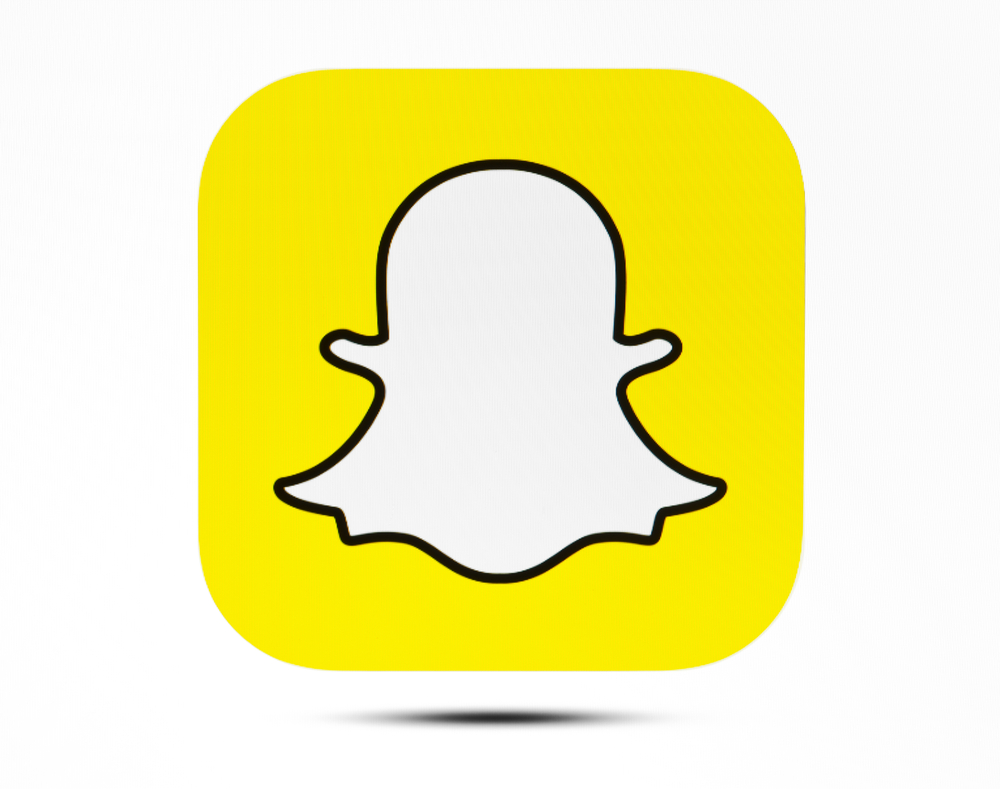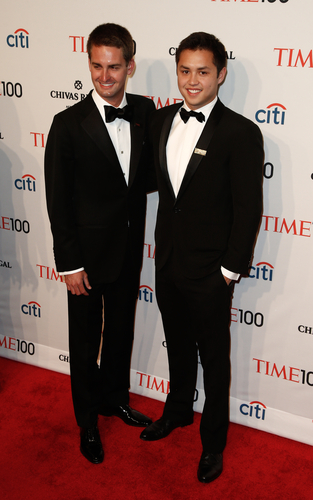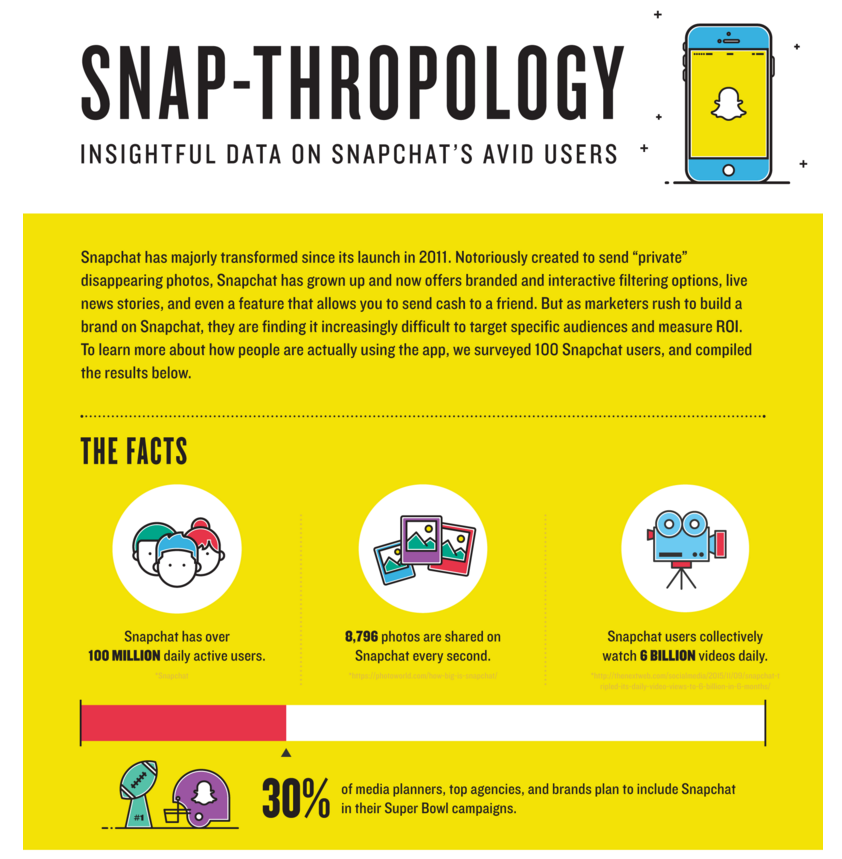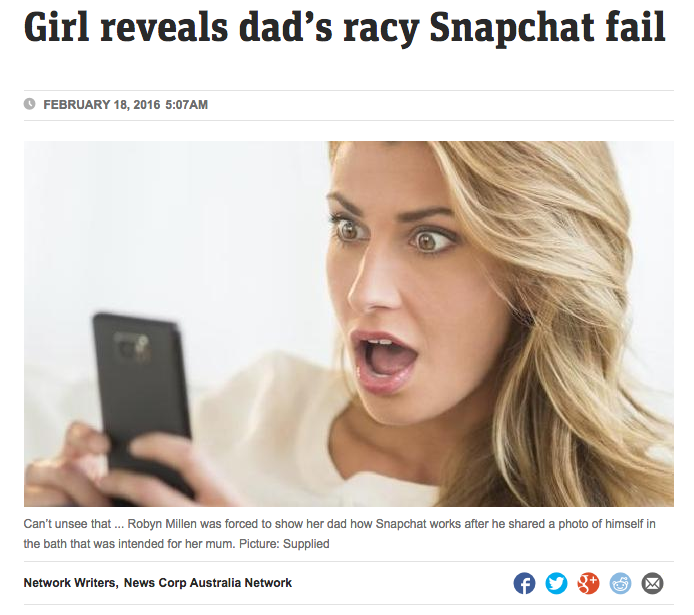While the origins of Snapchat remains an issue of litigation, the core founders are Evan Spiegel and Bobby Murphy, who apparently were fraternity brothers alongside Reggie Brown. As the story goes, Spiegel and Murphy were tossing around different ideas without much success. But all that changed one fateful night, when Brown wandered into their room, lamenting over a photo he wished he hadn’t shared online, and wishing there was a way to make a photo disappear after it was sent. Spiegel apparently loved the idea, and thus, Snapchat was born… sort of.
The trio got to work on a desktop version of their new brainchild, which had yet to earn its snappy new moniker. The initial idea was to create a website where users could upload photos, set a self-destruct timer and then send their photos. But the process was bogged down and cumbersome. That’s when the team realised the idea would be better suited to the mobile format, which in hindsight, seems obvious.
Spiegel was enrolled in a design class at Stanford and decided to hone development of his new project there. By the end of the semester, the class was offered the opportunity to pitch ideas to a group of venture capitalists, but the group wasn’t the least bit enthusiastic about this magic disappearing photo app, now called Picaboo. The cheesy name itself inspires eye rolls. The investors had a hard time visualizing the need for disappearing pictures, which is kind of shocking, given this was around the time of the Anthony Weiner scandal. If the disgraced US Congressman were in the room, perhaps he could have enlightened the investors on the value of photos that implode shortly after viewing.
Despite the lackluster showing, Spiegel and Murphy forged ahead, overcoming a potential deal breaker hiccup that allowed users to take a screenshot of any picture before it self-destructed. They managed to release the first iteration of Picaboo on the App Store in July of 2011. It was a total bust. After a few months, the app barely garnered 100 users. Brown pitched the idea of marketing the app as a sexting aid, but Spiegel and Murphy weren’t keen on it, even though that’s probably what it’s used for most to this day; only the delusional would self-destruct photos of a cute puppy or family gathering.
The team suffered another setback in December of 2012, when Mark Zuckerberg approached Spiegel to discuss their app. Apparently Facebook was set to launch their own version of Picaboo, called Poke, and Zuckerberg was intent on crushing his competition. Poke opened big in the App Store, but quickly fell by the wayside, while Picaboo was uplifted by the publicity of a potential thrashing. Zuckerberg’s plan backfired, but it took him nearly a full year before he approached Spiegel again, this time offering to buy Picaboo outright, to the tune of three billion dollars. Impressive, for a fledging app that had yet to earn a buck. Even more impressive, Spiegel turned Zuckerberg down, much to the dismay of the business world, who lauded him a fool. Internal squabbles began; Murphy’s parents urged him to find a real job, while Spiegel focused on shaking up the team, with Brown on the outs.
With the team restructured, Spiegel and Murphy renamed their app Snapchat, largely due to a cease and desist order from a photo company going by the same name. The shift turned out to be a blessing, because it staved Brown’s litigation over coming up the with idea, name, and logo for the app. Rebranding the app as Snapchat offered a clear departure from the past and forged new territory, now gaining momentum with nearly 1000 users. By then, an interesting trend emerged. Spiegel noticed usage of their app peaked during school hours, and discovered children were using it to pass notes, leaving no trace behind. By the spring, Snapchat had grown to 100,000 users.
It was around this time that Jeremy Liew, from Lightspeed Venture Partners, became aware of Snapchat when his partner told him about a popular app that was all the rage with his daughter and her classmates. Liew tracked down Spiegel and Murphy, and by April 2012, Lightspeed invested roughly $500,000 on a $4.25 million valuation. Spiegel dropped out of Stanford just a few weeks before graduating, while Murphy quit the coding job that was keeping him afloat. With their prospects looking bright, Snapchat moved into a new office near Venice beach, now boasting nearly 35 employees.
Snapchat still faces some challenges ahead, like how to best monetize the app. The cornerstone of their brand is total privacy, which makes targeted advertising a near impossibility. So Spiegel is looking at in-app purchases first, with an eye on tackling their advertising problem down the line. They’ve already begun to explore corporate partnerings with self-destruct coupons and special promotions that inspire a call to action. By the end of 2013, Snapchat had raised an additional $13 million from Benchmark, a venture capital group, and another $60 million the following summer from Institutional Venture Partners. But scandal still follows. By the New Year, hackers pilfered nearly 5 million user names and telephone numbers from Snapchat’s servers, then unloaded the bulk of their findings online; a clear shot across Snapchat’s bow, and not unlike the Ashley Madison vulnerability that still may prove to be the cheater website’s demise.
To this day, Spiegel is apparently content with turning down Facebooks outlandish multi-billion dollar offer, and intends to stick with his creation and see it through. Some analysts believe Snapchat offers a true threat to the likes of Facebook, because it’s still considered cool, while Facebook’s demographic is getting older by the day, now luring more forty-somethings than twenty-somethings. It still remains to be seen if Snapchat can actually crossover as the next big social media IPO, but one thing’s certain – people are embracing the anonymity of yesteryear, and Snapchat currently boasts over 50 million daily users; that’s one heck of a disappearing act. This article will self-destruct in 3… 2… 1…
Sources:
- www.forbes.com/sites/jjcolao/2014/01/06/the-inside-story-of-snapchat-the-worlds-hottest-app-or-a-3-billion-disappearing-act/
- www.techcruch.com/gallery/a-brief-history-of-snapchat/
- www.growthhackers.com/growth-studies/snapchat




